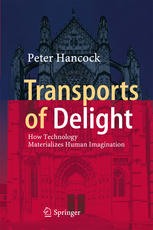

Most ebook files are in PDF format, so you can easily read them using various software such as Foxit Reader or directly on the Google Chrome browser.
Some ebook files are released by publishers in other formats such as .awz, .mobi, .epub, .fb2, etc. You may need to install specific software to read these formats on mobile/PC, such as Calibre.
Please read the tutorial at this link: https://ebookbell.com/faq
We offer FREE conversion to the popular formats you request; however, this may take some time. Therefore, right after payment, please email us, and we will try to provide the service as quickly as possible.
For some exceptional file formats or broken links (if any), please refrain from opening any disputes. Instead, email us first, and we will try to assist within a maximum of 6 hours.
EbookBell Team

5.0
100 reviewsThis inspiring book shows how the spiritual side of life, with its thoughts, feelings, and aspirations, is intimately bound up with our material technologies. From the wonder of Gothic Cathedrals, to the quiet majesty of lighter than air flight, to the ultimate in luxury of the north Atlantic steamers, Peter Hancock explores how these sequential heights of technology have enabled our dreams of being transported to new and uncharted realms to become reality. Sometimes literally, sometimes figuratively, technology has always been there to make material the visions of our imagination. This book shows how this has essentially been true for all technologies from Stonehenge to space station.But technology is far from perfect. Indeed, the author argues here that some of the most public and tragic of its failures still remain instructive, emblematic, and even inspiring. He reports on examples such as a Cathedral of the Earth (Beauvais), a Cathedral of the Seas (Titanic), and a Cathedral of the Air (Hindenburg) and tells their stories from the viewpoint of material transcendence. By interweaving their stories he reveals how technologies can succeed in elevating human beings and, in taking them to whole new realms of being, he explores and explains why these experiences are ‘Transports of Delight.’